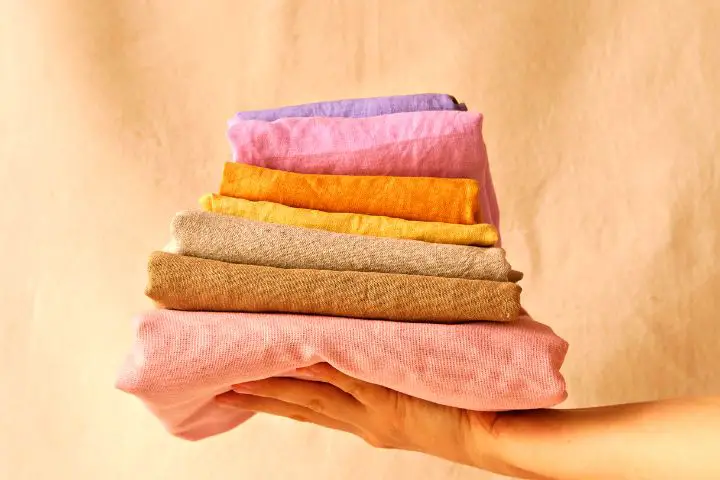Why Is Hemp Clothing So Expensive – Are They Worth It?
Hemp clothes are a great alternative to the synthetic fabric when aiming toward a more eco-conscious life. While they reduce your carbon footprint, they are not exactly kind to your pocket.
Natural hemp fabric costs a pretty penny because of its processing methods, disadvantages compared to other fabrics, limited availability, and low demand.
Main Reasons Why Hemp Fabric is Expensive
Hemp clothes are a sustainable option over other synthetic fabrics that we’re used to. Hemp fabric has a lot of benefits, such as weather-resistant and breathability. Honestly, I love that breathability property, but hemp clothing may not be easy to accommodate into your clothes budget.
Eco-living is becoming more popular, as people are always searching for a way to save the earth and their money in the long run. But hemp is very expensive, for now.
Here’s why.
Low Availability of Hemp Fibers
Hemp clothing is made from hemp fibres. This is a renewable resource that grows in mild climates. North Korea, Italy, and China are currently the largest manufacturers of hemp.
However, hemp farming is still growing. Although the cultivation of hemp increased to over 60 000 tons, it’s not enough to comfortably produce clothing at a lower price. Cotton is usually produced at 27 million tons.
The difference in numbers here is completely crazy!
So, hemp fibre remains at a low, which causes an increase in the prices.

Good Quality Hemp Needs Certain Certifications
Companies that make hemp clothing would have to grow the fibres in substantial amounts. Luckily, hemp grows really fast while using less space and water with little or sometimes no chemicals.
This is a big advantage, however, companies who make hemp clothing must have organic documentation. The quality of the hemp must be thoroughly tested, which ensures it follows all environmental procedures.
This process, in turn, increases the hemp price.
Hemp Textiles Cost More to Make
Since hemp fabric is rare, the textile machinery and infrastructure were modernized and improved with other fabrics and not hemp.
Harvested hemp fibres are not compatible with the machinery that spins yarn. In order to make this work, hemp has to be altered to make it soft like cotton. This involves enzymes and chemicals, which, you guessed it- is super costly.
Apart from that, hemp has to be altered without taking away its properties, such as durability. This expertise is still being learned about and needs special technology.
Low Demand for Hemp Clothing
Hemp is a sustainable material and is tougher compared to cotton. This includes hemp underwear, which is breathable and basically wear-proof. The hemp plant grows faster than cotton, and the cotton industry uses more resources with adverse environmental impacts.
But consumers stick with cotton clothing.
The benefits of hemp clothing are apparent, but it’s not everyone’s choice. Cotton is cheaper and a popular option, which creates a low demand for hemp fabric.
Low demand = high prices, unfortunately.
If consumers demand more hemp clothing, then eventually, supply will match, which will decrease the price, but that’s a long time coming!

Brands Add On Top of Already-Expensive Price
On top of the expensive cost price, the brand that purchases the hemp clothing will add a hefty mark-up to make it profitable. The retail price will also contribute to their brand image. While this is common practice, it doesn’t spell affordability to consumers like you and me.
Pros and Cons of Hemp Clothing
Let’s look at the pros and cons of hemp fabric, except for its steep price!
| Pros Of Hemp Fabric | Cons of Hemp Fabric |
| Hemp is super eco-friendly- This awesome plant needs no pesticides or herbicides as it deals with weeds on its own. Hemp controls erosion and produces oxygen, making it pretty much self-sufficient. It also requires very little water compared to cotton. There is very little waste, too, as the plant stalk can be used for fibre, and the seeds can be compressed for oil and supplements. It’s a win all-around! | Hemp clothes crease very fast- Like other natural fibres, hemp creases and wrinkles very fast, so it’s probably not a good choice to wear to an important interview! It’s also itchy, and pure hemp clothes would need special care to keep them strong. |
| It is durable- Hemp clothes are absorbent and lightweight. It will last longer than cotton or other fabrics. Plus, the material is breathable and is great for those hot, uncomfortable days! | It doesn’t have a rich colour- It is a natural alternative, so it cannot be dyed as bright as your normal clothes. However, it will have a cute, organic look. Hemp is also very hard to dye. |
| Hemp fabric can withstand different weathers- Hemp has a high thread count, which means that the sun’s UV rays cannot go through the material. | It needs special attention- Hemp clothes cannot be thrown into the washing machine. It will get old before its time! Hemp clothes need to be washed with cold water and air-dried. |
| Hemp fabric can be combined with other materials- You can blend hemp with other materials to get different kinds of benefits. If you mix it with another natural fibre, it remains biodegradable. | Hemp still has a bad rep- It’s legal to grow hemp in the US and other states, but it’s hard to tell the difference between cannabis and hemp. This includes law enforcement! Therefore, it makes it hard to promote hemp clothing. This will eventually change in time. |

Now that hemp cultivation is legal, we expect to see an increase in production and the number of hemp clothing. By this time, talented designers will find a way around hemp’s disadvantages, making various hemp clothing options available to all.
Frequently Asked Questions
Does hemp clothing smell?
If you’re wondering if they smell like cannabis, they do not! Nor do they leave any marijuana-like resin behind.
Hemp clothes do not hold any odors as it is a breathable fabric. These clothes actually do a very good job at absorbing sweat, which keeps odors at bay.
How long do hemp clothes last?
Hemp is super durable, as the fabric can last for a while.
With proper care, you can get up to 20 years! That is, if it still fits! Your hemp clothing will get softer, but the fibres won’t stretch or wear out.





